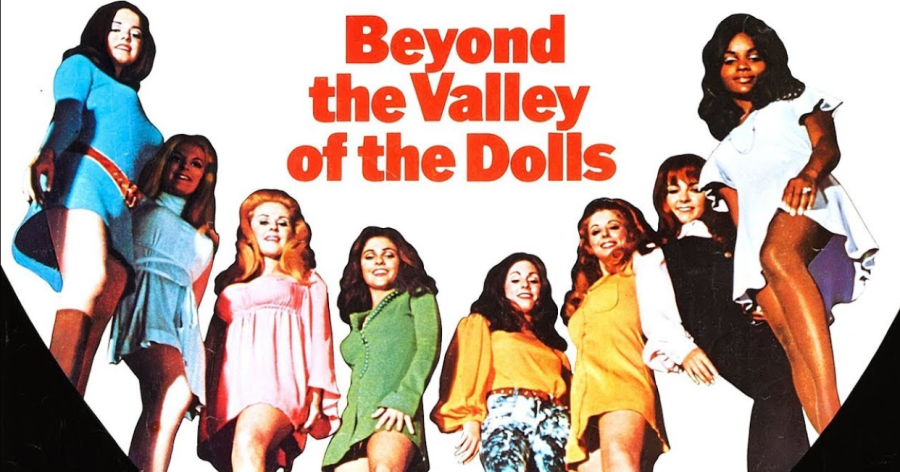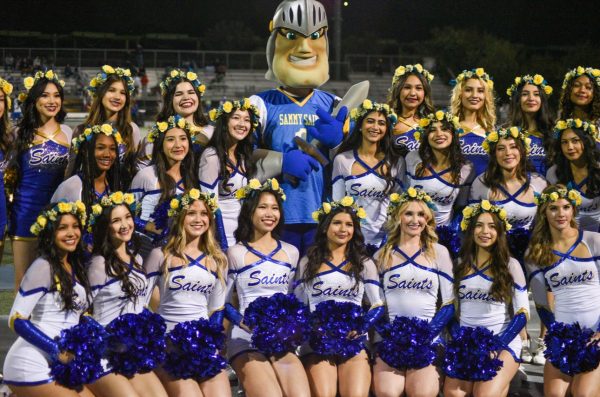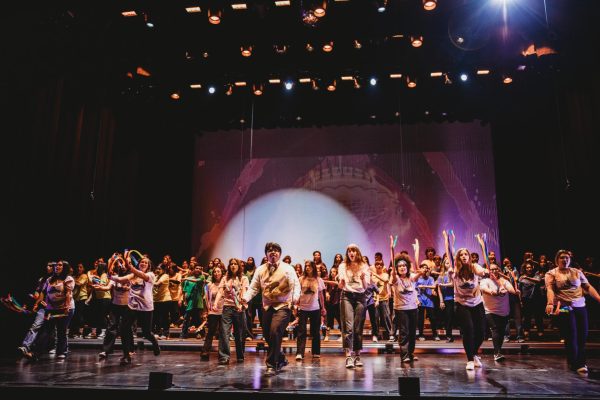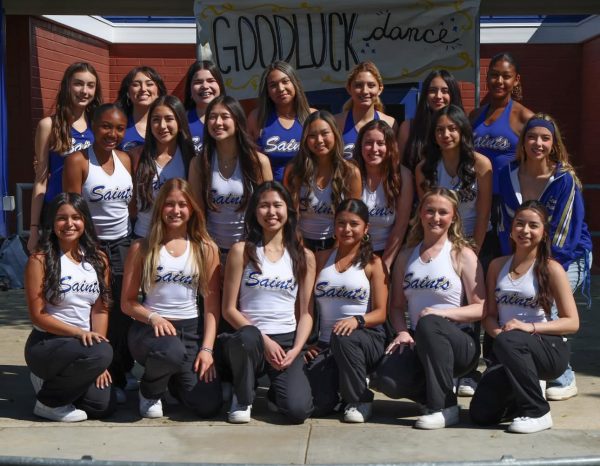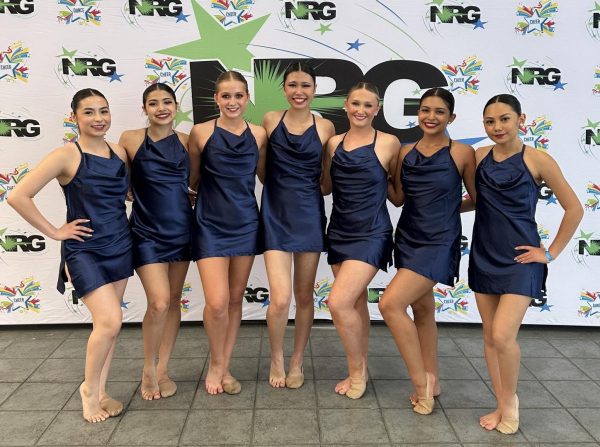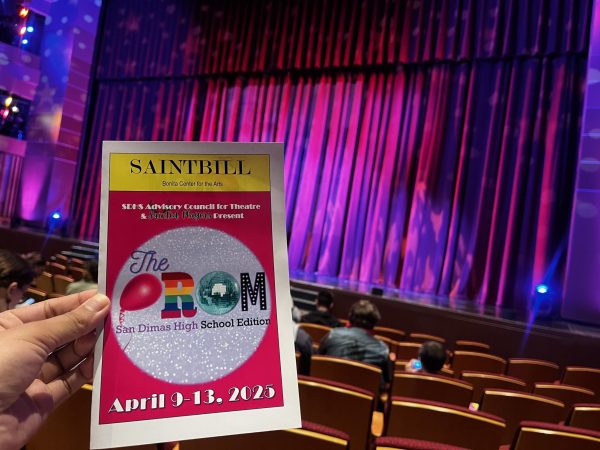In Defense of the Sequel and the Remake
Within the past decade or two, pop culture consumers have lamented about the oversaturation of sequels, recreations, and parodies of original media. The 2020s are the Age of Oversaturation, it appears. But there lies a beauty within the pastiche, the satirical, and the remake. Art is subjective, yes, but there exists a clear distinction between media executed well and its inverse, regardless of whether its subject matter is original or not.
To some, to execute a recreation well is to keep the likeness of the original work fresh in the mind of the audience. The original artist had their intention and should be kept at the forefront of all subsequent replicas. Senior Vanessa Sandoval says that “the greatest covers and remakes all carry the same spark and meanings the [original creator] had.” While not being exact copies, the thematic elements and overall feeling one gets from each respective work should be the same.
Movies like Freaky Friday (1976) and Freaky Friday (2003) embody this feeling. Both of these films are well-regarded and deemed integral family films. The great unifier of these two films is this: both parent and child need to be cognizant of each other’s point of view. That is what Gary Nelson and Mark Waters, the directors of each movie, respectively, had in mind. The remake did not skimp on this feel-good form of family therapy. All Waters did was freshen up the then-antiquated film for a younger generation.
Using Sandoval’s logic, what made the Lohan-Curtis pairing successful, perhaps even more so, was retaining the overall meaning of the original movie. Despite the use of early-oughts teen angst and the more evident generational gap, one can still surmise that a perspective shift is what the proverbial doctor ordered for tense families. Any deviation from this would wholly change both the esteem of Freaky Friday and any merit it has as an implicit therapy session.
Although considered a stretch by some, James Joyce’s Ulysses is structural and thematically identical to Homer’s epic poem, the Odyssey. Characters, arcs, Joyce’s tone, the names of characters, and the plot progressions all bear striking resemblance to the Odyssey. This was completely intentional. Ulysses recounts the events of the longwinded daily life of Leopold Bloom while its inspiration is the longwinded account of the titular Odysseus’ journey home. While not completely identical, one must view Joyce’s novel as the fruit born from Homer’s poem.
Ulysses and the Odyssey are both odes to the everyman. They are two characters whom the masses can root for and who the reader can imagine themselves as. To interpret the novel is to restate the poem. Like Freaky Friday, what makes these two works recreations of one another is the passing on of the Olympic torch, pun intended. Stylistic and thematic differences are present, yes. But analyzing this Sandovalianly, the reader takes away the same lessons from each work.
But is carrying the same meaning the only way a remake can be good? Senior Peyton Holden disagrees. “Remakes are so loosely defined that there only needs to be one thing that’s the same,” she explains. “Like, just the title or one aesthetic or scene or something is all I think defines a remake. Done well for a good one, of course.”
Nothing embodies this idea better than the 1970 film Beyond the Valley of the Dolls. This movie riffs on the movie The Valley of the Dolls released the year prior. While the name causes assumptions of a more expansive sequel, Beyond is a parody of its parent movie. Rather than wanting to embody the feelings aroused by the 1969 version, it satirizes the hoity-toity nature and mock-deep intentions.
Like all satires, Beyond illustrates a fundamental flaw within society and it utilizes the themes touched on in a movie considered a bust. The only connections between the source and its satire are attractive women in the 1960s with an addiction to downers and its name. Most other themes, lessons, and takeaways are fundamentally different. Yet there is a clear relationship between the two.
Beyond the Valley of the Dolls is a parodical remake. Does it vary from the original? Absolutely. But that does not degrade its value or its importance. It exists as a foil to its parent film. This relationship illustrates that lessons do not a sequel make. There exists a need for imitations to explore different concepts, perhaps even qualifying whatever meaning the source material had.
But, recreation is not relegated to being either a mirror of the parent work or a torchbearer of an old rationale. Copying and reinvigorating art holds just as much merit as the production of new art. Take, for instance, a cover. Each artist has their sonic taste and reason for music. What one artist wishes to include or omit can drastically alter how a listener perceives it.
The song “Cry Baby,” the seminal work of small soul artist Garnet Mimms, is a heartfelt midcentury Motown single. Mimms’ song tells the tale of a struggling relationship with a crooner. Seven years following its release, blues phenom Janis Joplin covered it, thrusting it into national prominence. Her cover is a total detraction from Mimms’ wish. A heartfelt ballad transformed into a strikingly rough last stand. Joplin’s work derides the notion that the same emotional energy needs to be kept or that the meaning should persist.
Staying in the musical world, sampling, too, can be considered a form of reproduction. It takes parts and aspects of an original sonic landscape and completely changes its quality. Artists like J Dilla, Nujabes, and even Kanye West are all considered to be paragons of utilizing the out-there and the obscure to make lush, pleasing soundscapes. It’s impossible to think that Hungarian rock artist Gabor Presser had the same intentions, wishes, and ethos as West. Presser’s 1968 single “Gyöngyhajú lány” was sampled on the single “New Slaves.” The artistic merit of Presser’s work was not ruined by the sample but changed to such a degree that the two works are incomparable.
Hip-hop producer J Dilla’s magnum opus, Donuts, utilizes the chopped-and-screwed sampling technique. It takes bits and bobs of existing works and changes tempo, keys, and prominence within a track. On the 18th track, “Don’t Cry,” Dilla flipped a 1970s soul track to turn into a mid-oughts lush hip-hop track further sampled by artists, even after his death. Like West, Dilla’s work metamorphoses the original, vinyl-borne track through the ability to fabricate, reform, and mold the original work into something beautifully novel.
Reproducing works is not just a way for studios to make a quick hundred million dollars, no. Although people sacrificing artistic merit for the sake of greed has been present for centuries, there exists an art form within the sequel. One might have to wade through dozens of poorly made to find a diamond. But, undoubtedly, some works may even eclipse others.



